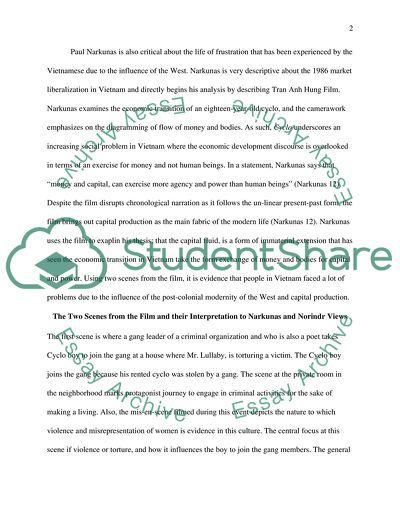Cite this document
(“Cinematographic Representation of Violence and Abuse of Women Essay - 1”, n.d.)
Cinematographic Representation of Violence and Abuse of Women Essay - 1. Retrieved from https://studentshare.org/visual-arts-film-studies/1696787-examine-tran-anh-hungs-cyclo-in-the-ways-that-the-film-deals-with-violence-capitalism-and-representations-of-gender
Cinematographic Representation of Violence and Abuse of Women Essay - 1. Retrieved from https://studentshare.org/visual-arts-film-studies/1696787-examine-tran-anh-hungs-cyclo-in-the-ways-that-the-film-deals-with-violence-capitalism-and-representations-of-gender
(Cinematographic Representation of Violence and Abuse of Women Essay - 1)
Cinematographic Representation of Violence and Abuse of Women Essay - 1. https://studentshare.org/visual-arts-film-studies/1696787-examine-tran-anh-hungs-cyclo-in-the-ways-that-the-film-deals-with-violence-capitalism-and-representations-of-gender.
Cinematographic Representation of Violence and Abuse of Women Essay - 1. https://studentshare.org/visual-arts-film-studies/1696787-examine-tran-anh-hungs-cyclo-in-the-ways-that-the-film-deals-with-violence-capitalism-and-representations-of-gender.
“Cinematographic Representation of Violence and Abuse of Women Essay - 1”, n.d. https://studentshare.org/visual-arts-film-studies/1696787-examine-tran-anh-hungs-cyclo-in-the-ways-that-the-film-deals-with-violence-capitalism-and-representations-of-gender.


